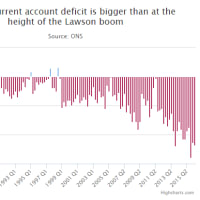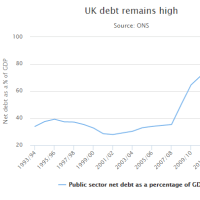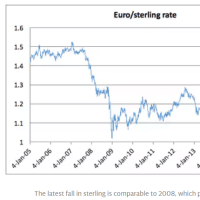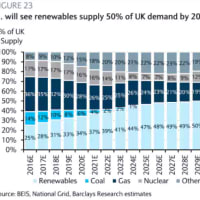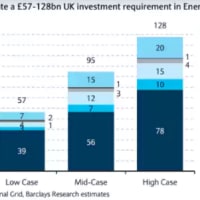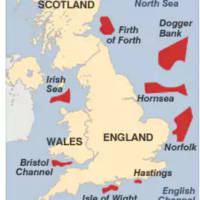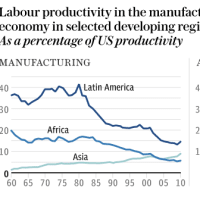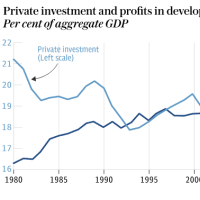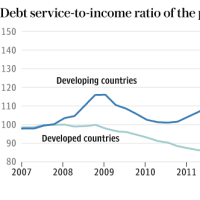つづき
And the companies with the highest levels of debt would simply collapse, raising the spectre of mass lay-offs.
そして、借入の多い企業は倒産するだろうし、大量解雇の恐怖を高めるだろう。
People without jobs have less money to spend, so any company directly or indirectly reliant on consumer spending - shops, pubs, restaurants - is further squeezed.
失業した人は使える金も減る。
従って、直接的、または間接的に消費者支出に依存する企業(店、パブ、レストラン)は、更に不景気になる。
Higher unemployment also means the Government has to pay out more money in benefits. Lower employment and a stagnant economy means the Government raises less money in tax to pay for such spending. The only response is to borrow more.
失業率の上昇は、政府が払わねばならない生活保障費の増額も意味する。
雇用が減り経済が停滞すれば、このような支出を賄うための税収入が減る。
唯一の対策は、借金を増やすことだ。
In the UK, borrowing is already high and heading past £60 billion this year. Government debt ultimately pushes up interest rates by soaking up finite investment and forcing other borrowers to pay more to attract the loans that are available.
イギリスは既に沢山借金しているし、今年は£600億を超えそうだ。
もっと融資を惹き付けるために、限りある投資を吸収し他の借り手にもっと支払わせることで、政府債務は最終的に金利を押し上げる。
Higher interest rates would only pile more pressure on households and companies already struggling to keep their heads above water. The vicious circle of higher interest rates and economic contraction would drag the world into a prolonged depression.
金利が上がれば、既に青息吐息の家計や企業への圧力が増すだけだ。
高金利と経済収縮の悪循環は、世界を長引く不況へと追いやるだろう。
The last such depression, which began with the 1929 Wall Street crash, did not truly end until the eve of the Second World War a decade later.
1929年のウォール街クラッシュで始まった前回のこのような不況は、その10年後に起こった第二次世界大戦前夜まで、真に終わることはなかった。
 | KGBの世界都市ガイド晶文社このアイテムの詳細を見る |










